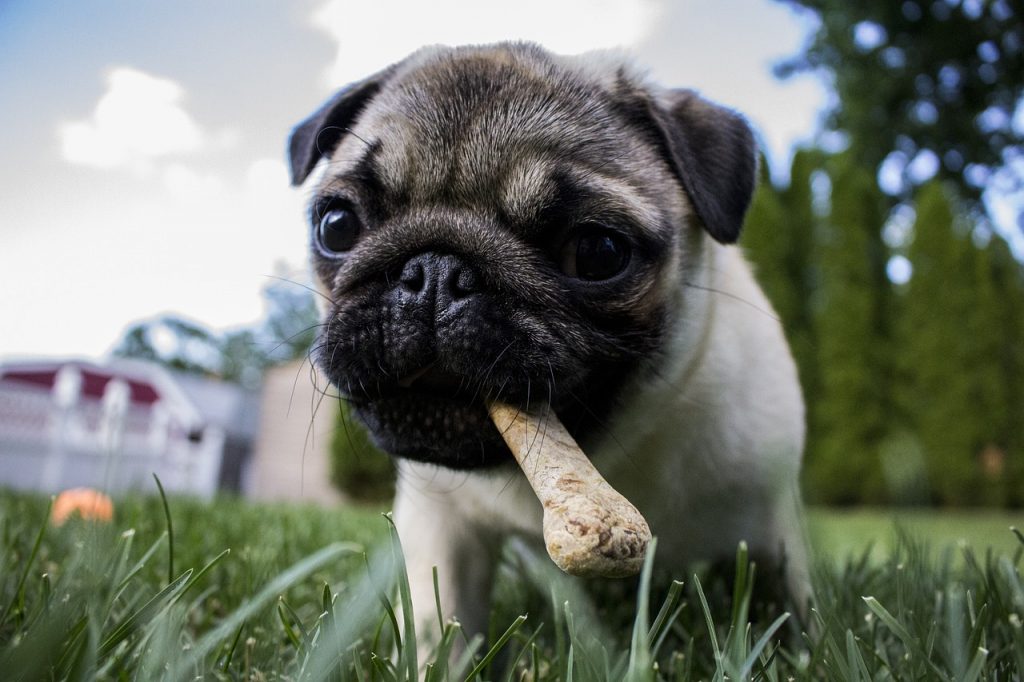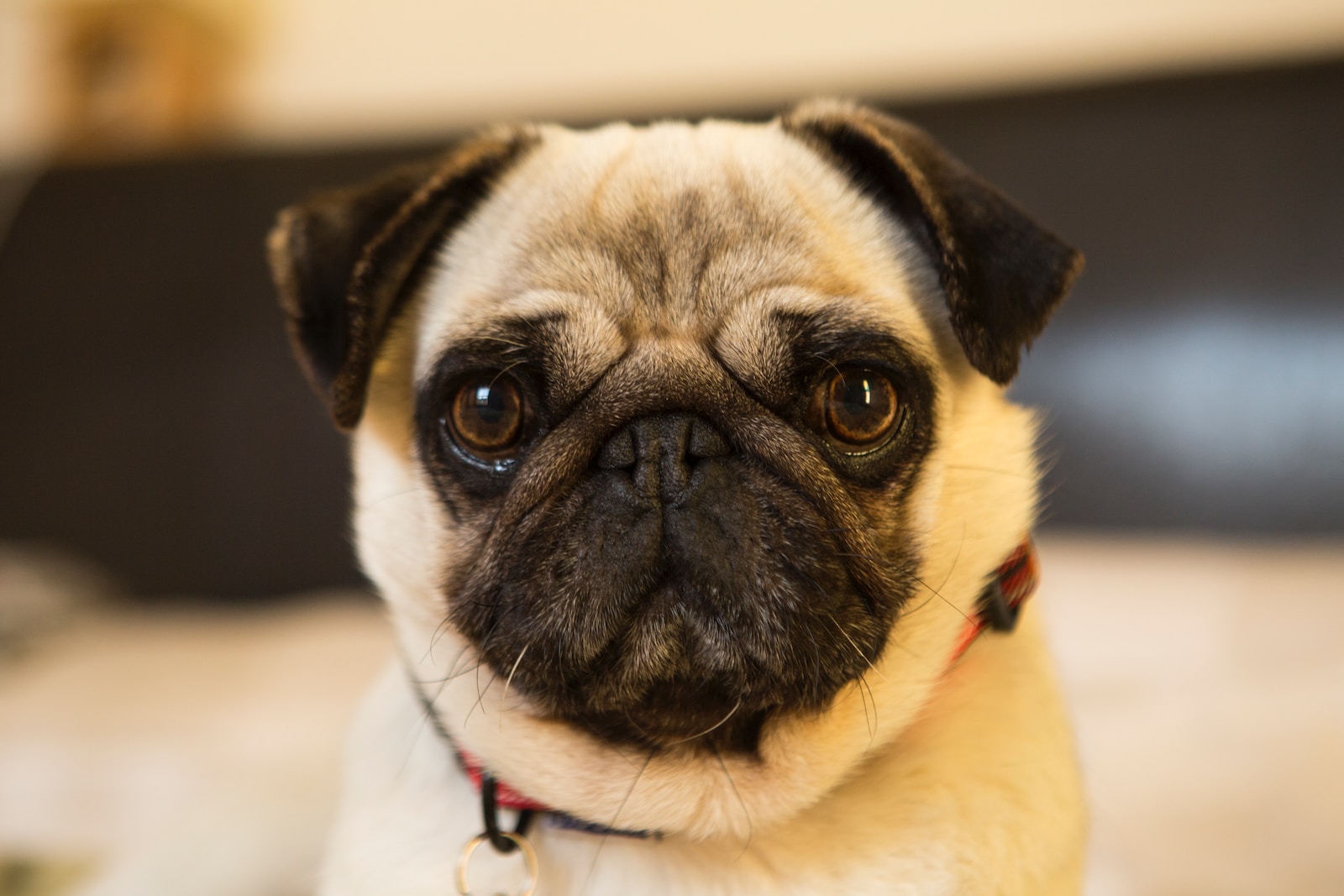Introduction Pugs, with their adorable wrinkled faces and charming personalities, have found a special place...

Introduction
Pugs are adorable and expressive dogs known for their distinctive curly tails. Understanding your pug’s body language is crucial for effective communication and building a strong bond with your furry companion.
One important aspect of pug body language is tail wagging. In this article, we will explore the intricacies of pug tail language and how to interpret your pug’s tail wagging.
Table of Contents
- Introduction
- Understanding Pug Tail Language
- The Position of the Tail
- The Speed of Wagging
- The Direction of Wagging
- The Tail and Body Language
- Happy Tail Wagging
- Nervous or Anxious Tail Wagging
- Playful Tail Wagging
- Tail Wagging and Aggression
- Health Issues and Tail Wagging
- Tail Docking in Pugs
- Tail Language: Pug to Pug Communication
- Conclusion
- FAQs (Frequently Asked Questions)
- Can a pug wag its tail if it doesn’t have one?
- How can I tell if my pug is happy by its tail wagging?
- What should I do if my pug’s tail wagging is accompanied by growling?
- Do all pugs have the same tail language?
- Can a pug’s tail wagging indicate pain or discomfort?
Understanding Pug Tail Language
Pugs communicate a wide range of emotions through their tail wagging. To accurately interpret their messages, pay attention to the following factors:
1. The Position of the Tail
The position of your pug’s tail can provide valuable insights into its emotional state. A high-held tail indicates confidence and excitement, while a low-held tail suggests insecurity or fear. An upright tail with a slight curve is a sign of curiosity and interest.
2. The Speed of Wagging
The speed of your pug’s tail wagging is another essential cue to consider. A fast wagging tail usually signifies happiness and enthusiasm. Conversely, a slow wag or a stiff, slow wag may indicate caution or unease.
3. The Direction of Wagging
The direction in which your pug’s tail wags can convey different meanings. A tail wagging towards the right suggests positive emotions, such as joy and friendliness. Conversely, a tail wagging towards the left may indicate stress or anxiety.
4. The Tail and Body Language
To fully understand your pug’s emotions, observe how its tail interacts with its overall body language. A relaxed and loose tail accompanied by a relaxed body posture generally indicates a calm and content pug. However, a tucked tail or a stiff body can signify fear or discomfort.
Happy Tail Wagging
When your pug is happy and content, its tail will exhibit specific characteristics. The tail will be held high or in a neutral position, wagging rapidly from side to side. It may also have a slight curve in an upward direction. Happy tail wagging is often accompanied by a relaxed body, loose movements, and a cheerful expression.
Nervous or Anxious Tail Wagging
In situations where your pug feels nervous or anxious, the tail wagging will differ from that of a happy pug. The tail may be held lower than usual, and the wagging speed might be slower and more restrained. The tail may also be tucked between the hind legs, indicating unease or fear. Other signs of anxiety may include panting, pacing, or trembling.
Playful Tail Wagging
Pugs are known for their playful nature, and their tail wagging reflects this enthusiasm. During playtime, a pug’s tail will wag rapidly and in a circular motion. The pug may also exhibit bouncy movements, play bows, and a general eagerness to engage. Playful tail wagging is accompanied by a cheerful and animated demeanor.
Tail Wagging and Aggression
While tail wagging is often associated with positive emotions, it’s important to note that it can also occur during moments of aggression. If your pug’s tail is held high and stiff, accompanied by growling or snarling, it may be displaying aggressive behavior. In such cases, it’s crucial to assess the overall body language and consult a professional dog trainer or behaviorist for guidance.
Health Issues and Tail Wagging
Sometimes, changes in your pug’s tail wagging behavior can be an indication of underlying health issues. If your pug’s tail wagging patterns suddenly change, such as becoming slower, more sporadic, or painful, it’s essential to consult a veterinarian. Tail injuries, infections, or neurological conditions can affect the tail’s movement and require medical attention.
Tail Docking in Pugs
Tail docking, the removal of a portion of a dog’s tail, has been practiced in some breeds, including pugs. However, it is important to note that tail docking is controversial and banned in many countries due to ethical concerns. It is generally recommended to avoid tail docking in pugs and prioritize their natural tail expression as an essential aspect of communication.
Tail Language: Pug to Pug Communication
Pugs also use their tails to communicate with other dogs. When meeting another dog, pugs may wag their tails rapidly, signaling friendliness and a desire to engage in play. However, it’s crucial to monitor the overall body language and ensure that both dogs are comfortable and exhibiting positive social cues during interactions.

FAQs (Frequently Asked Questions)
1. Can a pug wag its tail if it doesn’t have one?
No, tail wagging is a specific physical movement that requires a tail. If a pug’s tail has been surgically removed (tail docking), it will not be able to wag its tail.
2. How can I tell if my pug is happy by its tail wagging?
A happy pug’s tail will be held high or in a neutral position, wagging rapidly from side to side. The pug will also exhibit a relaxed body posture and a cheerful expression.
3. What should I do if my pug’s tail wagging is accompanied by growling?
If your pug’s tail wagging is accompanied by growling, it may be displaying signs of aggression. It’s important to assess the overall body language and consult a professional dog trainer or behaviorist for guidance.
4. Do all pugs have the same tail language?
While there are general patterns in pug tail language, individual pugs may exhibit variations based on their personality and experiences. It’s essential to understand your specific pug’s unique tail language through observation and familiarity.
5. Can a pug’s tail wagging indicate pain or discomfort?
Yes, changes in a pug’s tail wagging patterns, such as becoming slower, more sporadic, or painful, can indicate underlying health issues. If you notice any changes, it’s important to consult a veterinarian for a thorough examination.
Conclusion
Understanding your pug’s tail language is an invaluable skill for every pug owner. By paying attention to the position, speed, direction, and overall body language associated with tail wagging, you can gain insights into your pug’s emotions and effectively communicate with them. Remember to consider context and consult professionals if you have any concerns about your pug’s behavior or health.
Pug Digging Solutions: Curbing Your Pug’s Digging Instincts
Introduction If you are a proud owner of a charming pug, you must be well-acquainted...
The Five Best Dog Trackers – Never Lose Your Dog Again
Introduction As a responsible pet owner, ensuring the safety and security of your furry friend...
Introduction Pugs are adorable and affectionate pets that bring joy to millions of households worldwide....










